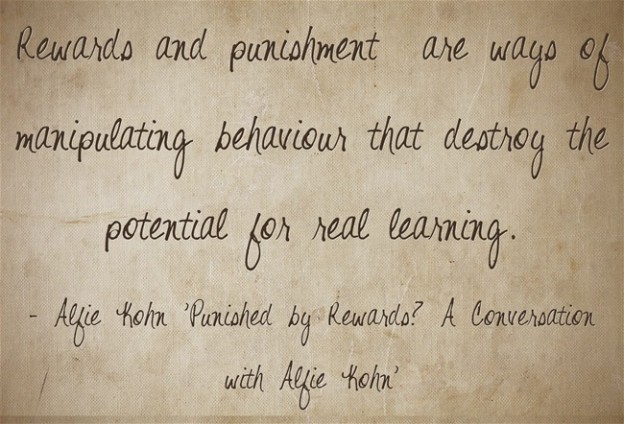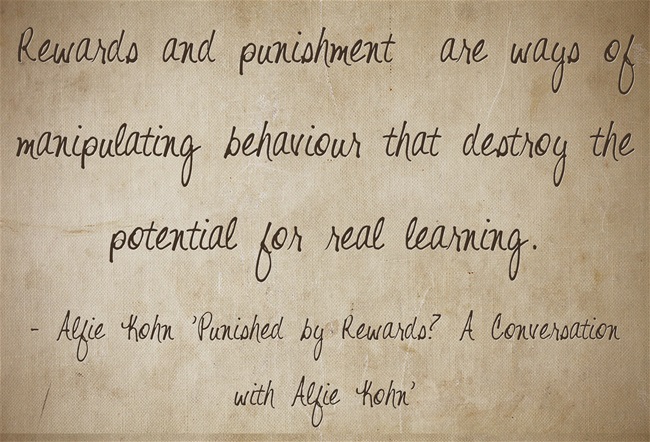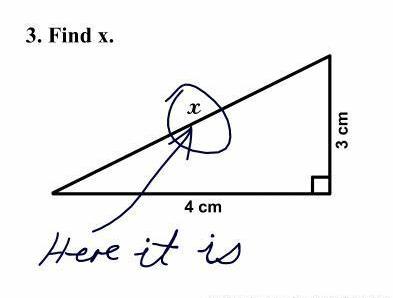In a recent post on the Connected Principals blog, Sam LeDeaux posed the question: ‘Are Educators Passionate About Their Profession?‘ His basic premise was whether teacher’s go to work or go to school. This is really a part of a wider debate in education about perspective and the way we see things. One other such area where this is prevalent is the great debate over the differences between the Primary and Secondary classroom.
Working in a P-9 school has its benefits, including the ability to gain a valuable vantage point. However, so often with every positive there is a dark side lurking, a constant comparison about the differences in how things are done, about who works harder, about which is easier. What is disappointing is that there is often little evidence used to support these arguments, let alone first hand experience. So here is our musing on the matter with a view to both sides of the divide …
Primary
Positives
Rapport. One of the biggest positives to being a Primary teacher is that you can invest more energy and resources into a smaller group of students, rather than spreading it across a whole lot of classes. With this, you can target areas of concern or enrichment more specifically across all learning areas, not just in the subject that you teach, as can be the way in the Secondary classroom.
More Flexibility. Having a class for over 20 hours a week, you have more time to mould and maneuver. Therefore, if something needs to be finished or you miss out on a day due to an excursion, you have the flexibility to move sessions around to fit the needs of the students rather than the needs of the timetable.
Everyday is Different. With the opportunity to teach so many different areas, there is never any doubling up and repetition. Therefore, everyday becomes that little bit different.
A Whole Range of Experiences. Rather than getting to know how Johnny works in English or Science, working with Johnny all day, everyday, whether it be in the classroom or on an excursion, Primary teachers are privy to a wide range of opportunities and experiences. What is good about this is that the focus becomes about Johnny as a learner, rather than how Johnny is learning in XYZ.
Negatives
One Class, All of the Time. For some teachers this can be hard. If you have a difficult student who you just struggle to click with or a student who drains all of your time and attention, being their number one teacher can be a strain.
More Non-Face-to-Face Time. Not sure if this is consistent around the world. However, in Victoria Primary teachers get 2.5 hours for planning and administration on top of their time after school, compared to 5 hours that Secondary teachers get. An added point of confusion is that this time is simply non-face-to-face teaching and can still, under the agreement, be dictated by the school how it is used, whether this be planning in a group or monitoring students. Therefore, 2.5 hours can dwindle away to nothing once you fit planning and the odd parent meeting in.
More Growth and Differentiation. This is a slightly contentious issue, but it is fair to say that the difference between a student coming in at Prep and then leaving at the end of Year 6 is far greater than a student coming in at Year 7 and leaving at the end of Year 12. To go from a student who can’t hold a pencil or cut up a piece of paper to a student who can (hopefully) organise themselves and their learning is far greater than what occurs in the Secondary classroom.
Greater Parent Involvement. While this is often a positive, it can sometimes be a negative. There is far greater scrutiny and stress applied by parents in Primary school. Often this pressure has waned by the time students get to Secondary school.
Jack of all Trades and a Master of None. This is a significant point with the recent implementation of the Australian National Curriculum. Teachers in the Early Years are now being asked to explicitly teach subjects like Science and History, whereas in the past they were incorporated into integrated units of study and were not necessarily required to assess some of these areas. In his
commentry on the
+TER Podcast, Stephen Breen, President of the Western Australian Primary Principals’ Association, described the National Curriculum as , “basically a secondary model in a primary area.”
One Perspective. Despite all the guidelines, shared planning, rubrics and moderation, progress can so often be subjective and come down to the teacher judgement. On top of this, with so many areas to manage, it can be difficult to track and then there are the inter-disciplinary subjects.
Secondary
Positives
Particular Passion. Only teaching a couple of subjects, Secondary teachers can communicate and instil a passion for a specific area, rather than spreading your energies across the board. For example, you might be a fantastic musician and therefore simply take students for music.
Progress and Perspective. Progress is easier to track and less subjective. Even if you are the only teacher who gives Johnny a progression point for writing, you can at least speak with the Johnny’s other teachers about how he goes in their subjects.
Independence, Organisation and Schedules. Unlike the fluid timetable that sometimes exist in the Primary classroom, in the Secondary environment you know where you are teaching, what you are teaching and when as it is explicitly stated in the timetable.
Parents Trust Your Judgement. Parents, in most cases, ‘trust’ your judgements more and are less likely to interfere with decision making.
Negatives
Connections more Difficult. When you could teach a particular class for only an hour per week, maintaining rapport can be more difficult. Often such connections are fostered outside the classroom, making things such as yard duty, sporting days and excursions, so much more important.
Shared Responsibilities. Targeting a student’s specific needs becomes a joint responsibility across many faculties and can become difficult to monitor. Although it can be good to get a wider perspective on the problem, deciding who and how the problem will be addressed is another matter.
Engagement and Behaviour. Having spent years in education, some students have had enough of schooling and can therefore be more difficult to reason with. In addition to this, hormones kick in. Often behaviour issues become much more serious and can be more difficult to intervene. Added to all this, the tendency for teacher focused learning in many Secondary classrooms leaves some students feeling lost and alienated about who they are meant to be and what answer they are supposed to give.
Load Spread Too Thin. Your energy, time and resources are spread across a wide area of students on a daily basis. It is plausible in some schools to teach up to six different classes in one day.
Lack of Perspective. It is so easy to become ‘blinkered’ in your view of education and what is important when all you teach is one subject. Although this can provide a great depth of knowledge and passion for a certain area, it can also lack a wider perspective. Associated with this, once you are entrenched in one area, you are often less willing to take on new teaching challenges.
A Different Kind of Busy
I think that a piece like this leaves more questions than it does answers. For it takes for granted what a ‘Primary’ and ‘Secondary’ classroom looks and feels like. There are still so many other different roles being played out in schools that so often go unaccounted, such as the Primary specialist teacher who often teacher a different class every lesson or the leading teacher whose crossover between coaching and accountability often brings with it its own headaches. In addition to this, there is the discrepancy in Secondary between the core subjects which are often allocated a session a day compared with health and humanities which are lucky to get more than two sessions a week in most schools, if that. The reality is that it is all just a different kind of busy.






